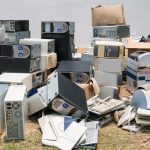Open-source software is a type of computer software whose source code is released under a license in which the copyright holder grants users the rights to study, change, and distribute the software to anyone and for any purpose. Many organizations use open-source to develop technology for both internal and external use. In this infographic, we share some stats on how corporations are using open-source, current trends, and more.
Thirty years ago, The Simpsons started as a cartoon short on the Tracey Ullman Show. Since then the series has become a part of pop culture history. The Simpsons humor seems outlandish but sometimes also seems to predict the future. In 2000, the Simpson’s eerily predicted Donald Trump’s presidency. The show has also accurately predicted a number of technology innovations including video chat, smartwatches, and 3-d printed food. One of the reasons for the show’s success is the creator’s skill to tap into the consciousness of the everyman/woman. In honor […]
In some shape or form, most enterprises are using the cloud. According to the RightScale 2018 State of the Cloud Report, 81% of enterprises have a multi-cloud strategy. The report also showed enterprises with a hybrid strategy (combining public and private clouds) fell from 58 percent in 2017 to 51 percent in 2018. Why would organizations select a multi-cloud strategy over a hybrid strategy? One big reason is a multi-cloud strategy provides IT with flexibility. A multi-cloud strategy approach can provide organizations with many competitive advantages. With a multi-cloud strategy […]
The blockchain is used in a variety of ways. Many companies are investing in blockchain technology. In our new infographic, we break down the principles, benefits, and more about the blockchain.
This past month at the DISASSEMBLY: BROOKLYN art show in New York City, Liquid Technology Manager, Michael Cappuccilli joined Brooklyn artist, Wiena Lin, and representatives from the U.S. Environmental Protection Agency, MIT Senseable City Lab, and Basel Action Network to explore the true cost of affordable consumer electronics. The panel, “Design and the E-Waste Crisis,” took place on August 16, 2018 to educate attendees regarding the negative impact that obsolete electronics have on the environment. DISASSEMBLY: BROOKLYN is a site-specific, participatory installation that examines consumer electronics through the lens of […]
Why do R2 and e-Stewards matter? Well, both are electronic waste standards. These regulations were created to stop illegal and harmful e-waste practices. Before these initiatives, there was little policing around organizations exporting e-waste to countries like China, and Ghana. Often in these countries e-waste is mishandled leading to exposure to toxins and hazardous materials. In 2008, the United States Environmental Protection Agency (EPA) organized a multi-stakeholder process to create a voluntary, market-based mechanism for ensuring best practices in electronics recycling. The operation led to the creation of the R2 […]
In our new infographic, we share information on the positive impact that DevOps has on IT.
Data Center POST recently spoke with Liquid Technology’s Managing Partner, Richard Greene, to learn what it takes to safely and securely execute data destruction, e-waste recycling, and computer liquidation. Read on to learn more. 1.Can you give some insight into the genesis of Liquid Technology and what you do? As one of the industry’s leading IT asset disposition service providers, Liquid Technology offers a suite of effective and impartial solutions for data destruction, e-waste recycling, and computer liquidation. With nearly 20 years of experience in IT asset disposition (ITAD), […]
Each year new trends emerge in technology. This year, A.I., blockchain, biometrics and a host of other trends are being used to keep technology secure. Which cybersecurity trends are on top? Our latest infographic shares some of the top cybersecurity trends of 2018.
Whether a company regularly upgrades IT equipment to keep pace with cutting edge technologies, is migrating to the cloud, or simply finds itself with end-of-life hardware it no longer needs, all face the same dilemma: what to do with the no longer needed legacy equipment. Companies faced with this predicament soon realize the problem of excess technology is much more complex than what they face when simply updating their office furniture. Here are three reasons why e-waste may be your next big problem: 1) Improperly Recycled e-Waste Can Negatively Impact […]










